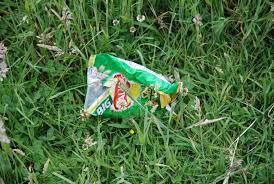
We are currently having a bit of a drive to reduce the environmental impact of our snack consumption. One area we’re partcularly looking at is crisp packaging.
Most crisp packets end up in landfill, where they last for over 30 years. The average UK resident consumes 200+ packets per year. At the current rate of consumption, the UK will send 220 billion crisp packets to landfill over the next 30 years.
The packets are made from a mixture of polypropylene (a themoplastic polymer) and aluminium. They can’t go in household recycling. Recycling is, apparently, a difficult and costly process, but can be done if bags are sent for the appropriate processing.
We already have recycling bins here for crisp packets and encourage children and staff to use them. We are able to send our collected packets off for specialist recycling.
This does not include Pringles packaging, which is famously difficult to recycle – these have to go to specialist centres of which there are currently only a few in the UK, although there is a collection point – the only one locally – at Carlton Tesco
Of course, the best envionmental solution is to reduce consumption.
There’s a health element to that too; crisps are heavily processed and typically high in salt (typically about 10% of a child’s daily recommeneded intake in a 25g bag) and fat.
Of course, most of us love them and enjoy them as a treat. We would not ban bags of crisps (some schools do, but it is controversial!) , but we would encourage alternatives as a savoury element to packed lunches – dried fruit, cereal bars, rice cakes, breadsticks, crackers? Not nuts please! If it has to be crisps, maybe consider replacing a standard bag with an equivalent amount taken from a ‘family’ sized bag – there’s less packaging that way.
